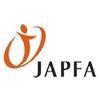I. INTRODUCTION
The global availability of inorganic phosphates is limited; phosphorus (P) is the third most expensive ingredient after energy and amino acids. Therefore sustainable animal production requires optimal utilisation of P to reduce the cost of feeding. Over two thirds of P in plantbased feedstuffs is not readily available in poultry as it is bound to phytic acid (PA), which has been commonly thought to be due to the low levels of endogenous phytase (Bedford, 2000; Woyengo and Nyachoti, 2011). However, recent studies have suggested that this is not the case, and in fact chickens possess adequate phytase activity in the intestinal mucosa. The primary issue with phytate digestion is poor substrate solubility in the small intestine due to cation (mainly Ca) interactions (Maenz and Classen, 1998; Cowieson, et al., 2011b). Calcium is known to form insoluble complexes with phytate phosphorus (PP), which hinders phytase activity (Angel, et al., 2002). Therefore, lowering dietary Ca levels can further improve the effect of exogenous phytase on PP degradation. Recent studies have shown that when adding phytase (500 FTU/kg), while at the same time lowering Ca in starter diets from 1% to 0.67% in combination with reduced non-PP (nPP) levels does not impair young bird performance (Létourneau-Montminy, et al., 2010; Powell, et al., 2011).
The use of exogenous phytase to assist the bird in degrading PP has become common practice. In recent years, the use of higher levels of exogenous phytase, referred to as super dosing, has been increasingly promoted as a method to release more PP and to alleviate the antinutritive effects of phytate per se (Cowieson, et al., 2011b).
In this study, the interaction between dP, Ca and phytase levels was evaluated with the aim of lowering inclusions of inorganic phosphates by optimising the hydrolysis of PP.
II. MATERIALS AND METHODS
Three thousand two hundred male Ross 308 broiler chickens were randomly distributed amongst 80 pens, 40 birds per pen, giving 8 treatments with 10 replicates. Each pen, 2.5 x 1.6 m, was fitted with 1 feeder and 4 nipple cup drinkers. Birds had ad libitum access to feed and water. From 0-3d, birds had 24 hours of light and from then on 18 hours of light and 6 hours of darkness. At the start of the trial brooding temperature was set to 33°C and then reduced incrementally to 20°C by 29 days. A description of treatments is shown in Table 1. A 3 phase feeding program was employed (0-8 d, 8-22 d and 22-36 d). Basal diets were maize/soya with energy increasing from 2850 kcal (11.92 MJ/kg AME) to 2950 kcal (12.34 MJ/kg AME) through phases and crude protein decreasing from 22.5% to 18.5%. The Ca, dP and phytase levels described in Table 1 were achieved by preparing a separate premix of limestone, monocalcium phosphate, phytase and sepiolite, added on top of the basal diet to make up the treatments. Basal diets contained between 2.58 and 2.78 g/kg phytate phosphorous. Birds and feed were weighed on days 0, 8, and 36. At 8 and 36 days of age, 1 animal/replicate, with a body weight (BW) within 5% of the average pen BW was euthanatized, and right tibias were collected, cleaned, and weighed for tibia ash determination. Data was analysed factorially using the general linear models (GLM) procedure of SAS.
Table 1 - Description of treatments
III. RESULTS
Increasing phytase dose from 500 to 1500 FTU reduced both feed intake (FI) and feed conversion ratio (FCR), without an effect on BW at 8 days of age (Table 2). Standard Ca levels impeded FI and BW at 8 days of age (P < 0.001), in birds receiving diets low in dP resulting in significant Ca*dP interaction (P < 0.001). Low dP levels impaired all performance parameters (P < 0.001). A significant interaction between phytase and dP was recorded for d8 BW, with the heaviest chicks observed in treatments with standard dP levels irrespective of enzyme inclusion, while high levels of phytase resulted in a lower bird weight than the lower phytase inclusion concentration, in the low dP treatments (P < 0.05).
At d36 a significant interaction between Ca and dP was observed, where standard Ca concentrations resulted in reduced BW and FI only in the birds fed the low dP diets. FCR for the total period was lower in the standard Ca treatments (P < 0.05). A tendency for an interaction between Ca and dP was noted, with standard Ca, low dP treatments yielding the most desirable feed conversions (P=0.089).
As shown in Table 3, at 8 days of age, tibia ash analysis revealed mineral content of bones from treatments 1, 2 and 7 were the highest (P < 0.01), while the lowest were to be found in treatment 4. High levels of dP had a significant improvement on tibia ash % (P < 0.05). In addition two way interactions were observed between all factors. At 36 days of age, no effects of treatment were observed on tibia ash %.
IV. DISCUSSION
The results of this study support previous observations that dietary Ca concentrations are influential in the extent to which birds respond to dP and phytase (Angel, et al., 2002; Tamim, et al., 2004; Cowieson, et al., 2011b). At standard Ca levels, low dP levels had a negative effect on weight gain at all ages and tibia ash at 8 days, this effect was further compounded by the addition of 1500 FTU/kg of phytase. The observed trend in depressed bone development in chicks exposed to high phytase levels in diets with standard Ca and low dP diets suggests that P availability was low. This may be due to an overestimation in P release at the higher phytase inclusion. As a result, diets were deficient in dP, with proportionally higher available Ca levels, capable of further lowering P availability by rendering nPP insoluble due to cation chelation. At low Ca levels, the low dP levels had a less pronounced effect on weight gain and bone ash compared to the high Ca levels. In turn, the high phytase level did not impede young chick bone mineralisation at the lowest dP levels to the same degree as observed in treatments with the same level of phytase and dP at standard Ca levels. Together this indicates a higher P availability at low Ca levels, supporting previous studies (Rama Rao, et al., 1999; Tamim, et al., 2004; Powell, et al., 2011).
Table 2 - Performance parameters of birds at 8 and 38 days of age
Table 3 - Tibia ash % at 8 and 36 days of age
Phytase has been shown to enhance energy and protein digestibility, resulting in improvements in BW with reduced FI (Ravindran, et al., 1999; Selle, et al., 2000). In the present study, the significant reductions in BW with 1500 FTU/kg of phytase, in addition to the assumed low P release, may have been due to a shortage of nutrients as a result of the reduced FI and the enzymes failure to compensate by releasing amino acids due to the abundance of Ca cations. At normal dP levels, the low Ca levels resulted in improved growth and litter quality (data not shown) compared to the standard Ca levels.
It can be concluded that reducing dietary Ca concentrations, particularly in the grower, finisher diets, results in improved performance of broilers with no change in bone ash (at slaughter weight) especially when offered diets with marginal dP supply. This strategy may be an effective way to reduce diet costs and improve broiler efficiency under commercial production systems. When increasing phytase dosing from 500 to 1500 FTU in formulation with matrix values of 0.96 and 1.69g dP/kg of feed, the risk of reduced FI should be considered. Therefore, in order to improve the consistency of the beneficial effects of higher doses of microbial phytase, dietary reformulation may be required, with particular attention to amino acid and energy concentrations (Cowieson, et al., 2011a).
REFERENCES
Angel R, Tamim N, Applegate T, Dhandu A, Ellestad L (2002) The Journal of Applied Poultry Research 11, 471-480.
Bedford MR (2000) Animal Feed Science and Technology 86, 1-13.
Cowieson AJ, Bedford MR, Ravindran V, Selle PH (2011a) British Poultry Science 52, 613- 624.
Cowieson AJ, Wilcock P, Bedford MR (2011b) World's Poultry Science Journal 67, 225- 236.
Létourneau-Montminy MP, Narcy A, Lescoat P, Bernier JF, Magnin M, Pomar C, Nys Y, Sauvant D, Jondreville C (2010) Animal 4, 1844-1853.
Maenz D, Classen H (1998) Poultry Science 77, 557-563.
Powell S, Bidner TD, Southern LL (2011) Poultry Science 90, 604-608.
Ravindran V, Cabahug S, Ravindran G, Bryden W (1999) Poultry Science 78, 699-706.
Selle P, Ravindran V, Caldwell R, Bryden W (2000) Nutrition Research Reviews 13, 255- 278.
Tamim N, Angel R, Christman M (2004) Poultry Science 83, 1358-1367.
Woyengo TA, Nyachoti CM (2011) Canadian Journal of Animal Science 91, 177-192.



.jpg&w=3840&q=75)



















